It is impossible to understand Central American history without paying attention to coffee. I learned this when I lived in El Salvador, where the ruling class (known as the “fourteen families”) consolidated economic and political power through the coffee economy. Shortly after independence, the legislature abolished communally held lands, stripping Indigenous communities of their ability to sustain themselves through farming and making vast plots of land available for purchase by the oligarchs. This process produced a gulf between the wealthy few and the impoverished many, a foundational inequality in Salvadoran society. In the decades since then, this inequitable distribution of land has fueled civil war, organized crime, and rampant violence. It is also a primary factor that has pushed over 1 million Salvadorans to migrate to the United States in search of better opportunities for their families. I have often wondered how different El Salvador’s history would have been if land had been distributed more equally.
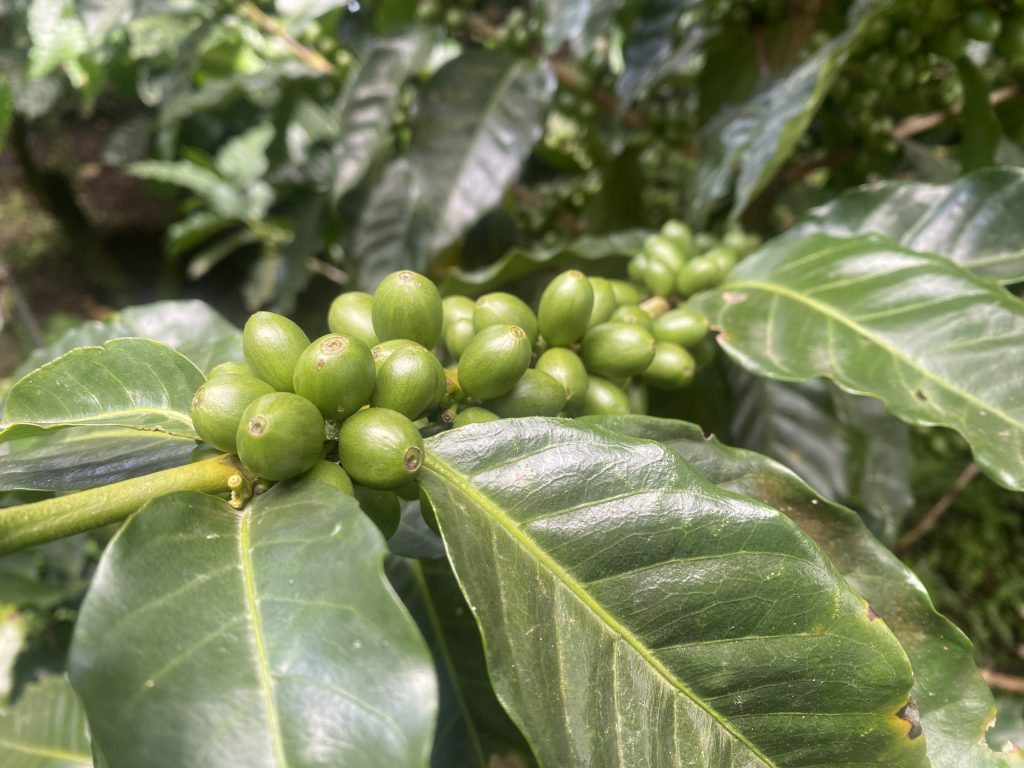
On our recent visit to Finca Life in Cañitas (a nearby town), I felt like I got to see some glimpses into such an alternate history. Finca Life is part of a local coffee-growing collective called Café Monteverde. When it was founded in 1989, several participating families pooled their small land holdings to work collectively. At first they produced both dairy products and coffee, but later they consolidated to focus on coffee production and have demonstrated a great deal of savvy to grow their business. They have opened coffee shops in high-traffic spots in local towns where they sell coffee exclusively made from their product. My husband, a serious coffee fan, says the coffee they sell there ranks among the best he has ever had. During the pandemic, they set up an online store to sell their coffee and other merchandise, and today they still send out coffee shipments internationally each week. They now also offer coffee tours for coffee aficionados.
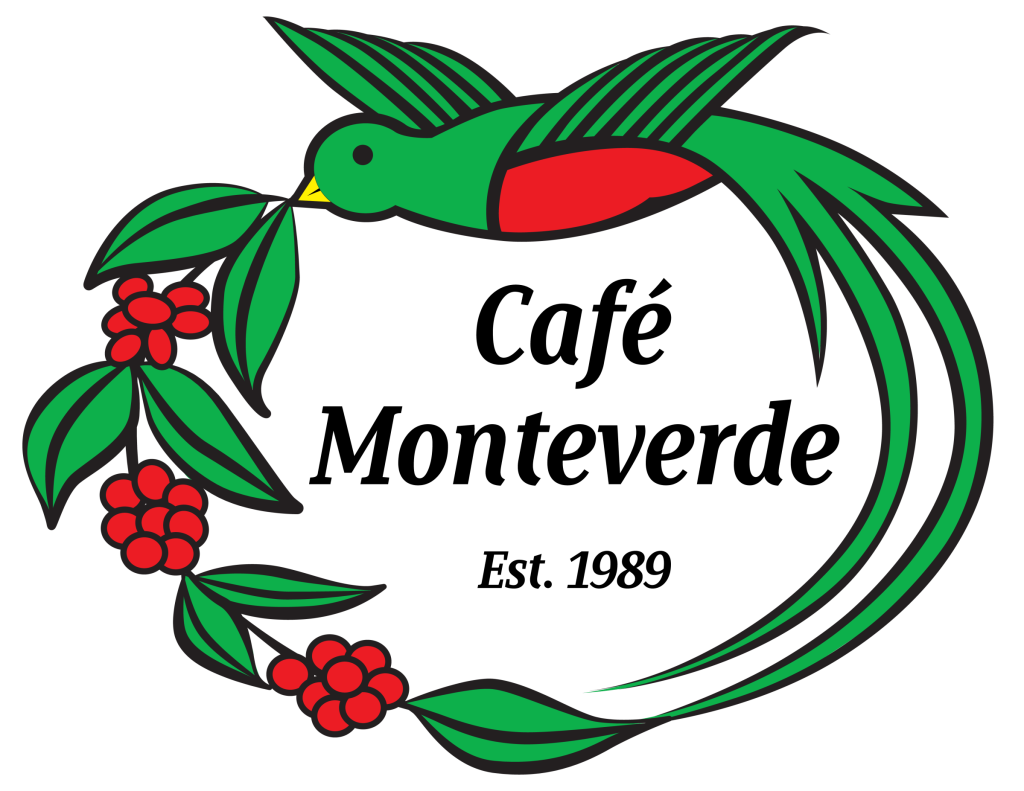
For over 25 years, Café Monteverde has been a model that has allowed the member families to sustain themselves. Today, the business continues to grow. They have purchased other local coffee farms when they went up for sale, incorporating new families into the co-operative. This keeps land ownership in the community rather than having it be bought up by investors from outside of the zone. Today, 21 families are members of the collective.
{{IMG_5176 – bins of coffee beans}}
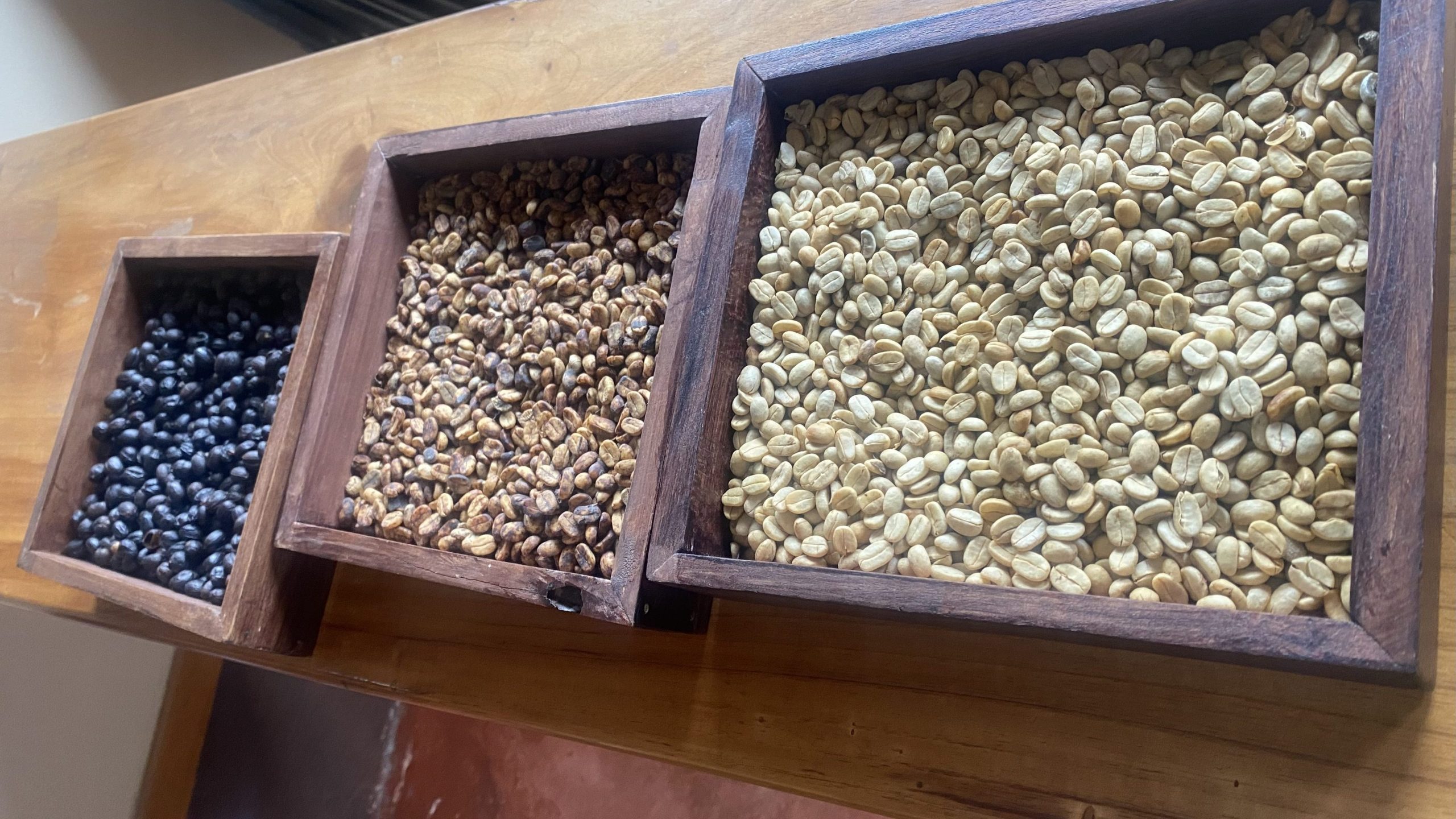
This is a very different story of coffee production from what I saw in El Salvador. I am not a scholar of Costa Rica, so I still have much to learn about Costa Rican history. But from the little I have learned so far, it is clear that the Costa Rican government over the years made important decisions that have made it possible for small-scale farmers like Finca Life to flourish. After a brief but bloody civil war, the country abolished the military in 1948. With the funds freed up by this decision, the government invested in health and education, creating a universal health care system and funding free public education through university. This use of government funds has provided a stable and peaceful society where projects like collective coffee production can thrive.
The government also enacted specific policies related to coffee production and land ownership. A government agency was established in 1933 to regulate coffee production and help small-scale farmers compete with large-scale producers and millers who were fixing the price to try to drive out competition. Today, this agency ensures that producers receive 80% of the FOB price (the market value of goods at the point where they are exported from an economy). A land-reform law passed in 1961 worked to curb large-scale land ownership and to integrate farmers into national development; for coffee producers, this led to the creation of farm cooperatives like Finca Life. This is not to say that the coffee industry in Costa Rica is without problems. Across the country, coffee pickers – often migrant workers from Nicaragua and Panama – still work long days for relatively little pay. And land ownership in Costa Rica is by no means egalitarian; indigenous communities especially face many challenges in recovering ownership and access to land that is legally theirs.
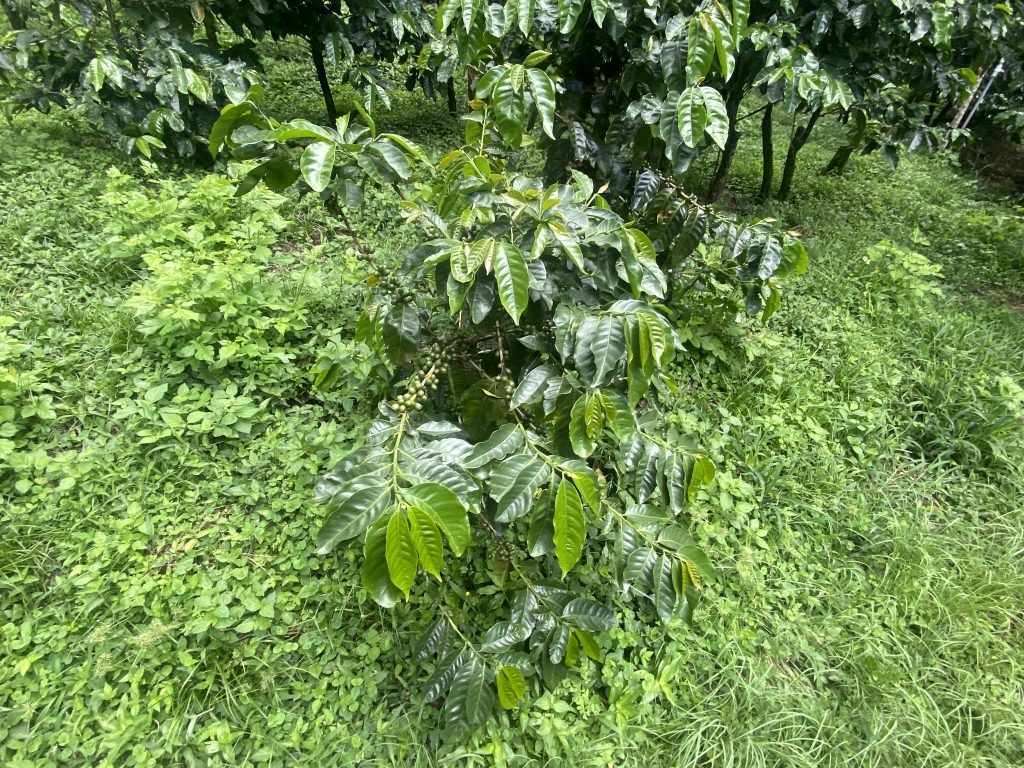
But the model of Café Monteverde is still one to follow. It has had many benefits for the wider community beyond the member families. The collective regularly hosts free community activities like a film screening and Children’s Day celebration that we attended. They provide free educational programming to local and national schools, as well as internship opportunities for students. Along with other providers of coffee tours in the region, they donate $1 per tour participant to a local community development fund. Over the last 4 years, they collectively donated $250,000!
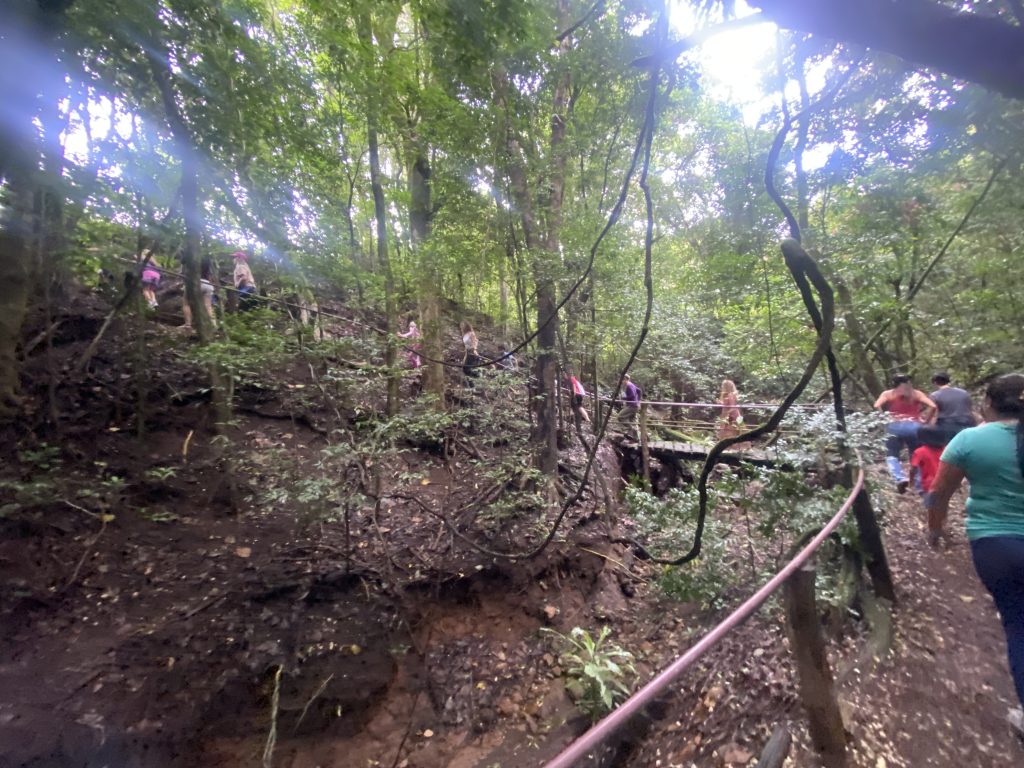
In addition to being good neighbors, Café Monteverde also takes seriously their responsibility for the land. At Finca Life, 50% of the land remains under forest. The rest is used for coffee production, vegetable gardens, and raising animals like goats and chickens who produce milk, cheese, and eggs. These food ingredients are used to prepare delicious meals that they serve to visitors in their educational programs and on the coffee tours. They have also moved away from using chemical fertilizers and pesticides and are instead relying on natural products that they produce themselves. They work with the ingredients at their disposal: leaf mulch from the forests, animal droppings, and the husks produced in coffee production, composting these ingredients down into a concentrated and nitrogen-rich fertilizer which they then “steep” in large vats of water to create natural fertilizer. They even have a small lab where they collaborate with researchers to study the micro-organisms in the soil so that they can learn which ones are most beneficial and how to use them to control pests.
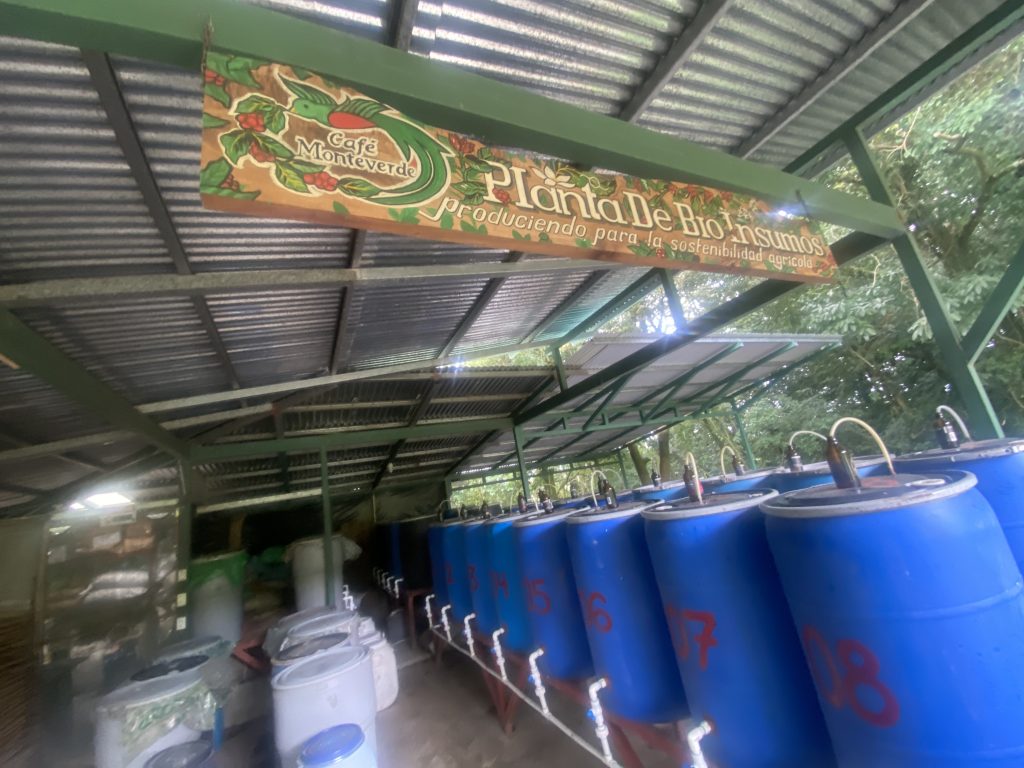
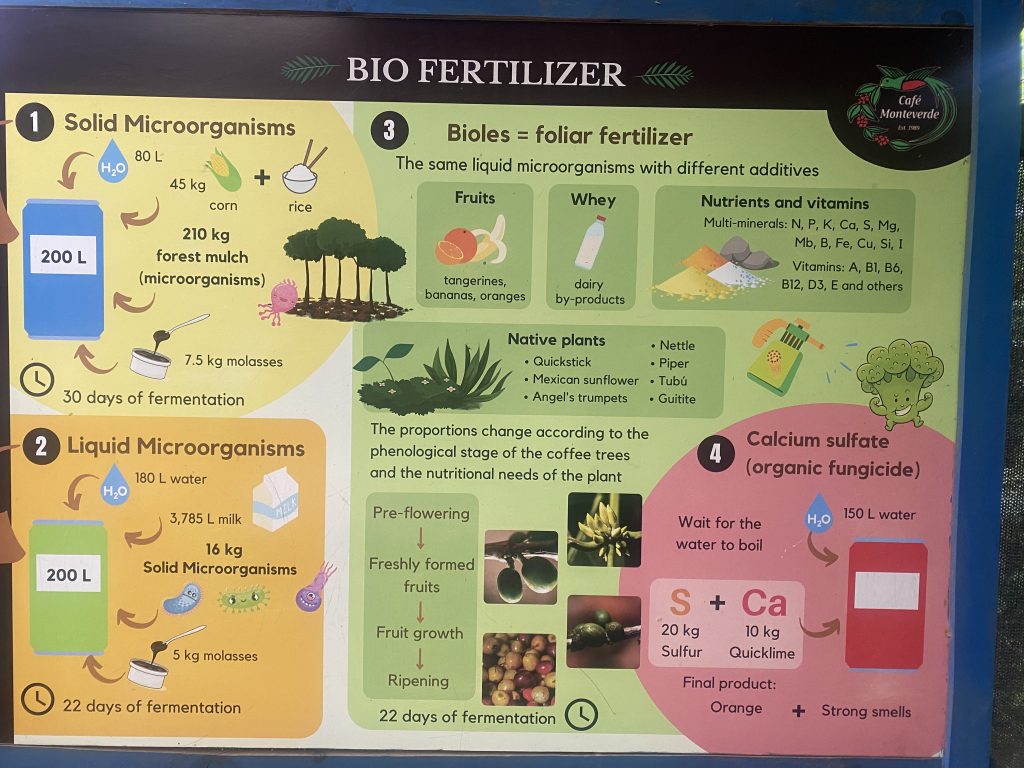
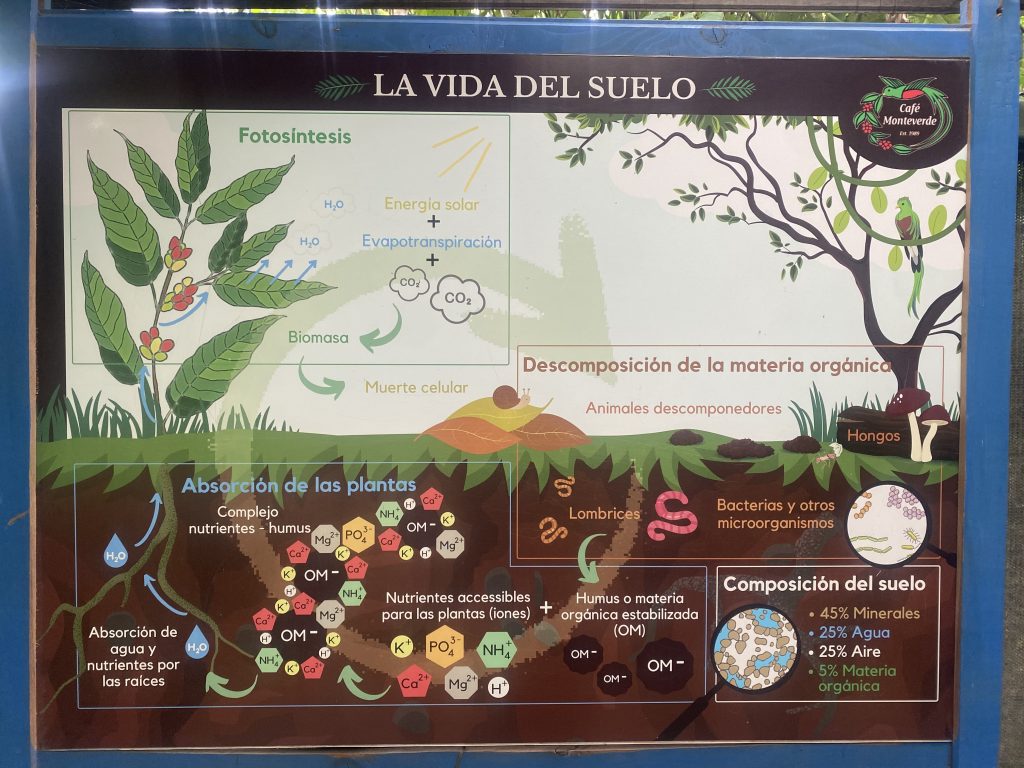
Visiting Finca Life and learning about Café Monteverde has allowed me to imagine another possible world in much more concrete and detailed ways. I hope that sharing this story inspires you too!
Leave a Reply